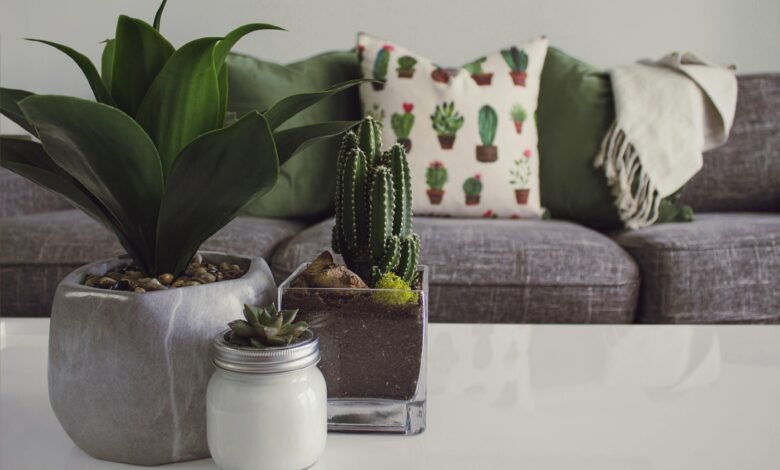3 Ways Home Design Can Improve Your Mental Health

Mental health is absolutely linked to living in an environment. A well-designed home helps one feel calm and relieved of stress generally. Effective home design transcends mere aesthetics-it can significantly enhance people’s moods, productivity, and mental clarity. The spaces we spend most of our time in will dictate the way we feel and act. Therefore, making sure the spaces we stay in really inspire a positive mindset and satisfy our needs is important. So, let’s dive into three ways through which home design can improve your mental health, focusing on aspects that support a positive environment.
-
Focus on Natural Light and Open Spaces
Natural light maximizes healthy mental functioning, which can be achieved by keeping the rooms in the home open spaces with sufficient windows. Natural light helps boost mood and, as such, general well-being, offering a sense of brightness and warmth that artificial light cannot offer. Rooms featuring big windows, skylights, and open floor plans permit flood sunlight in the house and so create a welcoming, rejuvenating atmosphere with increased physical and mental health.
Open spaces also foster a sense of freedom as well as that of relaxation. With rooms opened up that flow from one another to the other, without barriers, a feeling of being expansive as well as soothing is created, thus achieving a more connected and hence, harmonious environment within the home. This would be of great help to individuals who will feel more comfortable in less cluttered or closed spaces and they can, therefore, appreciate the feeling of peacefulness that comes with it. With the professional design built in Colorado, homeowners can come up with an overall design that maximizes both light as well as openness. A design that boosts aesthetic appeal also increases emotional value in a place of, making it one that is comforting and peaceful.
-
Creating Mindfulness and Relaxation Spaces
Another significant point in house designing, touching the realm of mental health, is the aspect of mindfulness spaces and relaxation areas. In this world of fast, attention-requiring information and media, a calm space of its own can become an oasis for the mind, a place for getting away from the necessities of life. A quiet corner for reading, a meditation area, or even a courtyard for relaxation outdoors offers much-needed peaceful and reflective moments.
The interior design of such spaces should involve soothing colors, comfortable furniture, and natural decor so that the ambiance inspires peace. Soft colors, textures, and simple designs create a feeling of being grounded and connected to the earth while at peace. The use of natural materials, like wood and stone, can bring about a natural sense of grounding and bonding to nature, which calms the mind. It fosters spaces in which people are encouraged to stop and pull back from the stress of daily life and practice self-care. Intentional designs remind them to pause, breathe, and reconnect with themselves – a powerful step to mental well-being in a world that never seems to slow down.
-
Incorporation of Biophilic Design Elements
Biophilic design celebrates the inclusion of natural features into the built environment, and it has proven to benefit mental health. Among those elements directly connecting individuals to nature is found even in cities, aptly giving way to an unintended feeling of peace and contentment that people either cannot find or have difficulties finding in the city: namely, indoor plants, water features, and natural textures.
For instance, the plants purify the air while promoting better moods and calmness. This, therefore, fosters a very peaceful and refreshing atmosphere in the house. Greenery may also remind one of the outdoors and give people a sense of peace and relaxation that is often missed in concrete-filled cityscapes. Water features, like small fountains or aquariums, add soothing sounds to make the environment tranquil. In such a way, the house will truly be a haven. Working with architects or designers that incorporate all aspects of biophilic elements helps in creating a nurturing home environment supporting mental health. This philosophy of design, as much as it supports aesthetic values, also serves the cause of mental well-being due to its creation of an affinity with nature and the spaces that people can easily look forward to, easing their tensions and stress levels.
Conclusion
Conclusion: home design contributes to the improvement of mental health. By focusing on natural light and open spaces, mindful relaxation areas, and biophilic elements in the home design, homeowners can breed remarkable improvements in emotional well-being while advocating for mental wellness in their homes. As we increasingly spend our time at home, it is so important to create an environment that will foster our mental health, let us relax and recharge into a sense of peace. The best solution for better thought and diligent home design is not aesthetic support but rather enhancing the quality of our lives by creating space. Make these changes today to create a home that will facilitate actual mental wellness, enrich your everyday experiences, and make your home not a place to live but a place to thrive.



